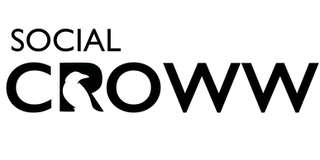How BoAt Became India's Audio Powerhouse: A $10 Billion Success Story
- Sachin Singh
- 1 day ago
- 4 min read

Introduction
BoAt the company of Indian origin, was established by Aman Gupta and Sameer Mehta in the year 2016 The company has since risen rapidly to be one of the leading five audio system makers worldwide. This case study examines BoAt's path from its beginning to market dominance. It outlines the most important financial data along with business strategies and lessons for other brands.
Founders and Vision
BoAt was founded by Aman Gupta and Sameer Mehta, both of whom bring a variety of experiences and backgrounds to the business. Aman Gupta, who has expertise in finance and marketing, is chief marketing officer (CMO), and Sameer Mehta, who has expertise in product development, serves as the CPO (chief product officer).
The journey from Scratch until Market Dominance
Initial Setup and Bootstrapping
BoAt began as a venture that was bootstrapped with a capital base of around 30 lakh rupees. The founders initially focused on manufacturing and selling cables prior to pivoting towards audio products .
Market Entry and Growth
BoAt was launched with a clear goal to offer fashionable, low-cost, high-quality audio equipment. In 2020, BoAt had expanded its product lines to service more than 800,000 customers, which is an impressive achievement given its humble beginnings .
Strategic Acquisitions
BoAt has strategically purchased businesses like KaHa Pte and TAGG to strengthen its commitment to the development of new technologies and to expand its market share in the field of audio technology .
Partnerships and Collaborations
BoAt has formed strategic alliances with companies such as Netflix, IPL teams, and Reliance Digital to enhance its brand's visibility and market share .
Financial Statistics
Revenue and Growth
Revenue: BoAt's revenue fell by 5 percent to INR 3122 crore in FY24 compared to INR 3,285 crore for FY23 .
Growth Milestones BoAt has built a community with more than 3 million customers. It promises to be adding one "boAthead" into its community each 3 mins .
Funding and Investments
BoAt has collected an amount of $177m in capital over eight rounds, with substantial investment by Warburg Pincus and Qualcomm Ventures .
Profitability
Net Loss: Diminished by 47% between INR 124.6 million in FY23, to 81.7 crore in FY24 .
EBITDA Margin: 10.10% in FY21, 4.96% in FY22, and -2% in FY23 .
BoAt’s Business Strategy Breakdown
BoAt's ascendance to the top was not by chance, it was the result of a smart and well-planned business brand strategy that combined branding, market fit, as well as digital first thinking. Here's how their plan worked:
Value-Driven Product Strategy
Affordable Premium: Providing premium audio products that are feature-rich and high-quality priced at a price that is affordable to those in the Indian middle-class.
The products were designed with a design-first approach: They were fashionable, vibrant and trendy, appealing to the younger generation that desired their gadgets to reflect their personal style.
Category Expansion: It started with wired earphones. Later, it extended to wireless, speakers wearables, soundbars (smartwatches) and, now gaming accessories.
Direct-to-Consumer (D2C) Model
E-commerce First: Utilized platforms such as Amazon, Flipkart, and their own website to distribute minimising retail costs and increasing the reach.
The Customer Feedback Loop: Direct selling enabled BoAt to swiftly adapt to the preferences of customers, modify features, and introduce new versions with no delays.
Influencer-Led Brand Building
The Pop Culture Collaborations BoAt is positioned as an "lifestyle brand" rather than a technology brand through collaboration with famous people as well as athletes and influencers from the world of fashion and music.
Boathead Community The community was created to create an identity in which users proudly identified themselves with "BoAtheads" and thereby increasing organic word-of-mouth.
Agile Marketing & Digital Strategy
Digital-First Campaigns: Use Instagram, YouTube, and other platforms to create short, relevant campaigns that are designed to Gen Z and millennials.
Promotions based on events: In conjunction with major music festivals, sporting events and cultural occasions to keep youth in the forefront of their minds.
Cost Efficiency Through Local Sourcing
Make in India Reducing dependence on China by manufacturing and assembling a variety of items in India and thereby gaining the advantage of price and sentiment.
Operational Control: Ensured tight control of manufacturing, packaging and logistics to ensure high-quality and profitability.
Strategic Retail & Channel Partnerships
Omnichannel Presence: Even though D2C was the primary channel, BoAt also expanded into offline retail by establishing its presence at Reliance Digital, Croma, etc., in order to draw customers who are not online.
Global Reach: We began exploring markets outside of the US and Canada through partnerships and posting on international platforms such as Amazon US and UAE.
Data-Driven Product Development
Trend tracking: BoAt monitored tech trends (like TWS earbuds, smartwatches gaming headsets) and was quick to introduce products targeting those areas.
Feedback Loops: Actively utilized customer reviews, influencer feedback along with sales analysis to enhance product features and design.
In Summary:
BoAt's business model combines affordability, digital dominance and a youth-centric brand to build an enduring customer base. With a rapid growth rate, constant innovation, and a sense of the culture of the moment, BoAt disrupted a highly competitive market and created a multi-billion-dollar market.

Comments